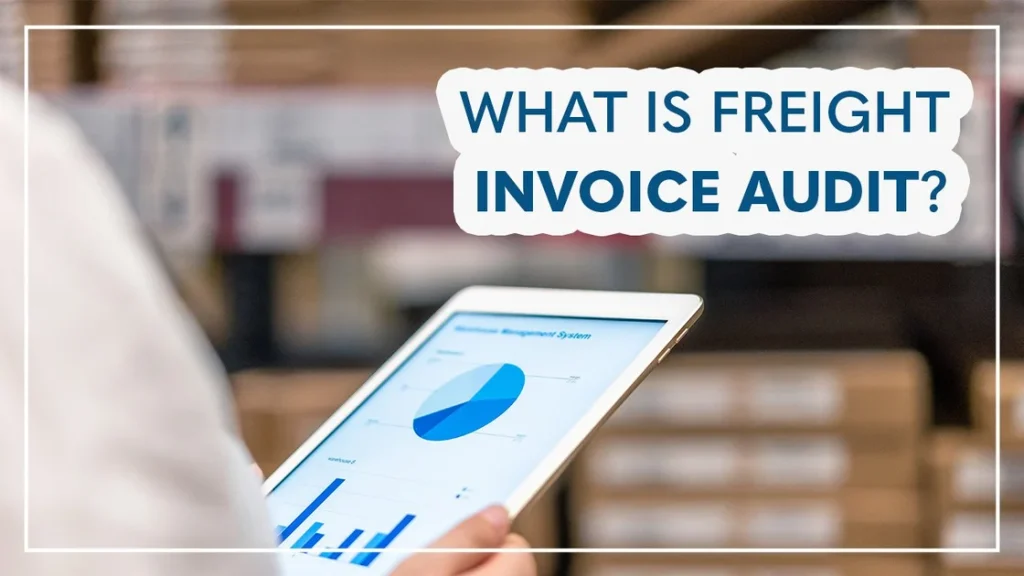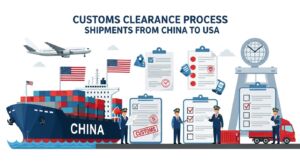What Is a Freight Bill?
A freight bill is a document that outlines the costs associated with transporting goods. It serves as a receipt and includes important details such as the shipper’s and receiver’s names, a description of the items being shipped, the weight, and the total freight charges. The freight bill is usually issued by the carrier or shipping company and acts as a contract between the shipper and the carrier. Freight forwarders, who often facilitate the logistics process, rely on this document to track shipping expenses and ensure that payments are made. It also helps resolve any disputes that may arise regarding shipping costs or services provided.
What Is Freight Invoice?
A freight invoice is a document that details the charges for transporting goods from one place to another. It includes important information such as the names of the sender and receiver, a description of the items being shipped, the shipping method, and the total cost of transportation. This invoice serves as a bill for the shipping services provided and is usually issued by the freight carrier or logistics company. Businesses use freight invoices to keep track of shipping expenses and to ensure that payments are made for the services rendered. It is an essential part of the shipping process.

Freight Billing Process
The freight billing process involves several steps to ensure accurate charges for shipping goods. First, the shipping company prepares a freight invoice detailing the costs associated with transporting items. This includes the weight, dimensions, and type of goods, as well as the shipping method used. Next, the invoice is sent to the customer for review. Once approved, the customer makes the payment. After payment is received, the shipping company updates its records. Any discrepancies or disputes are resolved through communication between the customer and the shipping provider. For a reliable and cost-effective shipping solution, Topshipping offers excellent services, ensuring transparency and accuracy in every step of the freight billing process. This helps maintain clear financial records for both parties involved.

Freight Billing Process
What Information Does a Freight Bill Contain?
A freight bill is an essential document providing a comprehensive overview of a shipment.
Here’s a breakdown of the key information it typically includes:Shipper Information: Name, address, and contact details of the sender (consignor).Consignee Information: Details of the recipient, including name, address, and contact info.Carrier Information: Name and contact details of the carrier responsible for transportation.Shipment Details: A description of the goods, including quantity, weight, dimensions, and any special handling instructions.Shipping Terms: Agreed transportation method, delivery schedule, and special services required.Charges and Fees: A breakdown of costs, including freight rates, surcharges, and additional fees like insurance or customs duties.Payment Terms: Agreed terms of payment, including deadlines, methods, and any penalties for late payments.Special Instructions or Conditions: Specific details like temperature control, hazardous materials, or delivery restrictions.Dates and Signatures: Shipment, receipt, and delivery dates, plus signatures from the shipper, carrier, and consignee.Tracking Information: If applicable, tracking numbers or identifiers for shipment progressAdditional Documentation: References to other documents such as packing lists, invoices, customs forms, or certificates of origin.
Overall, this document serves as a detailed record of the transaction, helping ensure transparency and smooth communication throughout the transportation process.
Why Are Freight Bills Necessary?
Freight bills are necessary for several important reasons. First, they provide a clear record of the shipping transaction, detailing the costs and services involved. This helps both the shipper and the receiver understand what they are paying for. Second, freight bills serve as a legal document that can be used in case of disputes. If there are any issues with the shipment, such as damage or incorrect charges, the bill freight can help resolve the matter.
Additionally, freight bills are essential for accounting purposes. Businesses need them to track shipping expenses and manage their budgets effectively. They also help with inventory management by providing information on the goods being shipped. Lastly, freight bills ensure that payments are made on time, as they outline the amount due and the payment terms. Overall, freight bills play a crucial role in the shipping process, ensuring transparency and accountability for all parties involved.

Who Reviews a Freight Bill?
A freight bill is typically reviewed by several parties involved in the shipping process. First, the shipping company checks it for accuracy, ensuring all details, like weight and charges, are correct. Next, the shipper, or the person sending the goods, reviews the bill to confirm that the charges match what was agreed upon. Finally, the receiver, or the person receiving the goods, may also review the bill freight to ensure they understand the costs involved. This review process helps prevent disputes and ensures that everyone is on the same page regarding shipping charges and services provided.

When Do You Sign a Freight Bill?
The signing of a freight document occurs at different stages during the shipping process, involving various parties.
Below are the key instances where signing typically takes place:
At Pickup (Consignor):
When the carrier arrives to collect the goods, the consignor signs to confirm the release of the shipment for transportation. This signature confirms the goods have been handed over to the carrier.
At Delivery (Consignee):
Upon delivery, the consignee or their representative signs to acknowledge receipt. This signature verifies that the shipment was delivered in line with the agreed terms.
At Transfer Points (Carrier):
If multiple carriers or transfer points are involved, each carrier signs when they take possession of the shipment and again upon passing it to the next party. These signatures help maintain accountability throughout the shipping process.
For Special Services:
When special handling instructions (e.g., expedited or temperature-controlled shipping) are involved, additional signatures may be required to confirm the completion of these services.
For Payment Confirmation:
In some cases, the consignee signs to confirm payment before the goods are released, acknowledging that all payments have been settled.
Signing the document at each of these points ensures accountability, tracks the shipment’s movement, and confirms the fulfillment of obligations between all parties involved in the shipping process.
How to Sign a Freight Document?
Signing a freight document is a simple yet crucial process. It’s important to ensure accuracy and completeness to prevent any future issues.
Follow these steps:
Verify Shipment Details:
Review the document thoroughly, confirming that all shipment information, such as goods description, shipping terms, charges, and any special instructions, is accurate.
Confirm Receipt of Goods:
If you’re the consignee, inspect the goods upon delivery. Ensure that they match the description and are in satisfactory condition without any damages or discrepancies.
Sign in the Designated Area:
Locate the designated signature area on the document. Sign your name clearly in the space provided.
Print Name and Date:
After signing, print your name and date next to your signature to indicate the official date of receipt or delivery.
Record Exceptions:
If there are any damages, shortages, or discrepancies, make a note of them on the document before signing. Add remarks like “subject to inspection” or “damaged goods” if needed.
Keep a Copy:
Always retain a copy of the signed document for your records. This serves as proof of the transaction in case any issues arise later.
Return a Copy to the Carrier:
Provide the carrier or driver with a signed copy to confirm the completion of the delivery.
By following these steps, you can ensure a smooth process when signing a freight document, helping to maintain transparency and accountability during the shipment.
Final Takeaway
These documents serve multiple purposes: they record cargo details, establish contracts between shippers and carriers, confirm delivery, streamline payment processes, ensure regulatory compliance, and help resolve disputes within the supply chain.
Shipping challenges, especially across international borders, are always a possibility. But with TopShipping’s reliable China-US shipping solutions, you can rest easy.
Our key advantage? The Bill of Lading acts like a passport for your shipment, offering complete transparency on everything from cargo contents to costs, ensuring smooth coordination among all parties involved.














